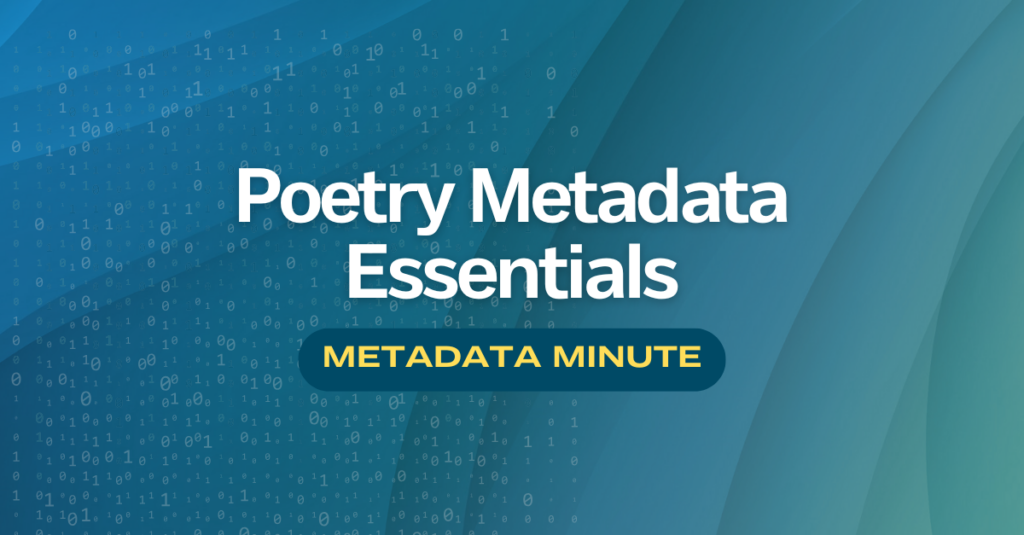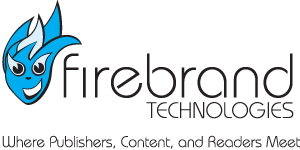
Metadata Minute (Issue #20): Poetry Metadata Essentials
In the niche but passionate world of poetry, discoverability depends on more than just beautiful language—poetry books need precise metadata that highlights the collection’s voice, themes, and appeal in order to find the right readers. Here are some poetry-specific metadata strategies to help your titles resonate.
BISAC Subjects
Poetry encompasses a wide variety of subjects and genres, so try to avoid defaulting to the generic POETRY / General subject code. BISG recommends using three BISAC codes per title, so choose a wide variety of subjects that reflect the poetry’s subjects and themes, county of origin, type of poem (Haiku, Sonnet, etc), religion, etc.
For example, a Japanese poem written by a female author about World War II could have the following BISAC codes: POETRY / Asian / Japanese, POETRY / Subjects & Themes / War, and POETRY / Women Authors.
Not every poetry title needs to have Poetry BISAC codes, either. If your poetry leans into specific formats or themes, don’t be afraid to explore other BISAC categories to better connect with audiences. Some examples include:
- NATURE / Environmental Conservation & Protection—Applies well for poems about climate change, endangered species, etc.
- FICTION / Novels in Verse—Best for poems that include a clear plot or character arc.
- FICTION / Literary—For literary-themed poetry that blurs the line between poetry and fiction.
- RELIGION / Spirituality—Perfect for theistic poetry.
- SELF-HELP / Death, Grief, Bereavement—Fitting for poems about grief.
- FAMILY & RELATIONSHIPS—has a lot of helpful codes for poetry, such as Divorce & Separation or Love & Romance.
Don’t forget that the BISG Merchandising Themes can also be helpful in defining your poetry book’s target audience. To continue our example from above, you might add the following Merchandising Themes to the title: CULTURAL HERITAGE / Asian, HOLIDAY / Memorial Day, and TOPICAL / Women’s Interest
Keywords
According to keysearch.co and seopital.co, here are some of the most common keywords that consumers use to search for poetry. Do you use any of these keywords in your poetry metadata?
- poetry or poetry books
- love poems or romantic poems
- poems about life
- poems for funerals
- poems about nature
- English poem
- modern poetry
- sad poems
- Mothers Day poem
- poems for her
“Modern accessible poetry is voraciously read by younger generations,” says Michelle Halket, Publisher at Central Avenue Publishing. Because of this, she suggests that publishers use social media keywords such as booktok, bookstagram, famous on insta, etc. since a lot of poetry is shared on those platforms.
Sidenote: If your author is particularly popular on social media, be sure to indicate that in your book description and author bio, and include their social media handles so readers can follow and engage.
Awards and Endorsements
Poetry awards, both local and global, can boost credibility and visibility. As soon as accolades, media mentions, or endorsements and quotes from known figures or publications become available, include them in your metadata—especially the book description and author bio. If the award or endorsement is from a well-known source, you might even want to list it beforeyour book description.
Images, Samples, and A+ Content
Poetry books are often visually enticing. Therefore, it’s helpful to let readers preview a few pages to help them connect with the tone and style. Provide interior image shots of unique or interesting pages in your feed. Provide book Samples or Excerpts to allow readers to virtually flip through your pages to find a poem that speaks to them—just as they would in a bookstore.
Some of Amazon’s best-selling poetry books incorporate A+ content. Here are some ideas for some visually appealing A+ content for poetry:
- Author introduction featuring their author portrait and perhaps a personal note or quote
- Aesthetic, designed quote cards featuring short poems, lines, or endorsements
- Use photography, illustrations, or design to convey the emotional tone of the book
- Whenever possible, use the pictures and graphics featured throughout the book in your marketing materials
For more publishing insights and book metadata tips, stay tuned to Metadata Minute—your monthly guide to smarter, sharper metadata.
Subscribe today to receive the “Metadata Minute” newsletter on the last Monday of each month. If you missed it, they will also be included in our monthly Firebrand Newsletter, sent straight to your inbox.
